Food Trails: Culinary Delights of Peninsular Malaysia
Malaysia has a rich native and colonial history and is home to a range of cultures. This mix of influences has given rise to some mouth-watering regional cuisine, particularly in Peninsular Malaysia. We take a trip through the region to discover its culinary specialties.
What to Eat in Ipoh
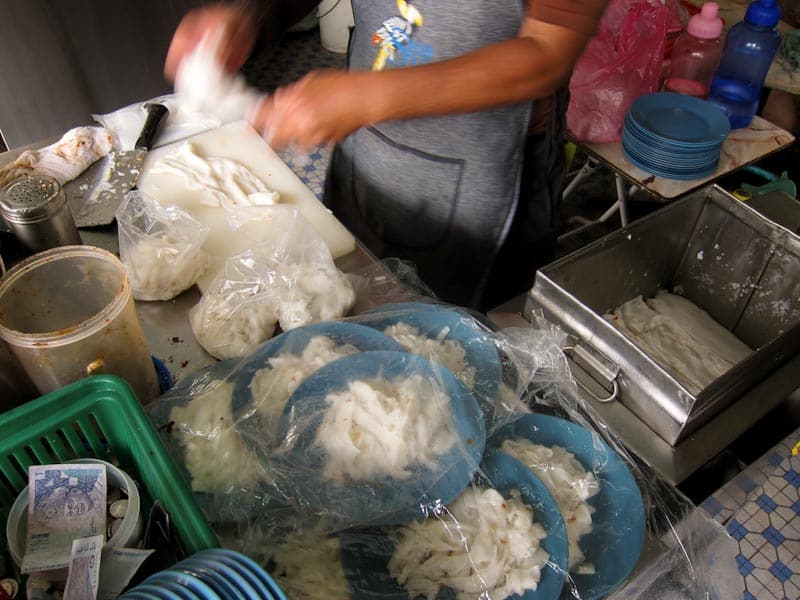
While exploring the attractions of Ipoh, stop once in a while to savour the fantastic snacks the city has to offer. Try the flaky kaya (coconut jam) puffs at Sin Eng Heong Foodstuff Manufacturers (64, Jalan Mustapha Al-Bakri [Jalan Clare] 30300) with a cup of creamy ‘white’ coffee served with condensed milk at Restoran Nam Heong (2, Jalan Bandar Timah, 30000).
Those preferring a lighter taste can grab a bowl of silky tau fu fah from Funny Mountain Soya Bean (49, Jalan Theatre, 30300). Its subtle sweet taste and silky texture is the perfect pick-me-up after a busy morning of sightseeing.
Chicken lovers will find Ipoh a delight: two specialty chicken dishes are readily available on restaurant menus. The Ipoh version of Hainan chicken rice can be found at Restoran Lou Wong Tauge Ayam Kue Tiau (49, Jalan Yau Tet Shin, 30300) and Ipoh Hainan Chicken Rice (107, Jalan Raja Musa Aziz, Kampung Jawa, 31350), which caters for halal diners.
Lovers of stronger flavours may prefer to order the yim kok kai, otherwise known as salted baked chicken – the chicken is encased in grease paper layered with salt and herbs for a unique flavour. Find this dish at Aun Kheng Lim Salted Chicken (24, Jalan Theatre, 30300).
Not a fan of chicken? Why not try the claypot crab from Kedai Makanan Rasa Lain (69, Persiaran Medan Bercham 2, Pusat Bandar Baru Bercham, 31400). Please note this restaurant is non-halal, but this is a dish that is sure to impress.
What to Eat in Melaka
The popular chicken rice that can be found throughout Malaysia comes in a different shape in Melaka – round. Chicken rice balls are a culinary icon that can be found at Chung Wah Chicken Rice Ball (18 Jalan Hang Jebat, 75200) and Hoe Kee Chicken Rice (468, Jalan Hang Jebat, 75200).
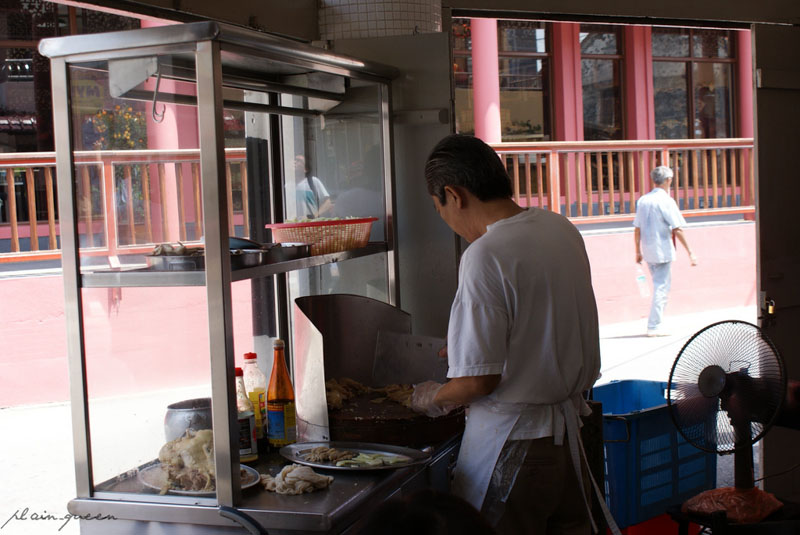
Melaka also offers a good selection of delicious dishes apart from chicken rice balls. These include duck noodles from Long Hiang Coffee Shop (93, Jalan Laksamana Cheng Ho, 75200), teo chew hee kiaw mee, or fish paste noodle, which is a favourite of Melaka locals and which can be found at New Wang Food Court (Jalan Tun Sri Lanang, 75100), and satay celup, which resembles a European fondue, where an assortment of raw and semi-cooked seafood, meat (including raw meat) and vegetables on skewers are dunked into a boiling pot of satay gravy. This particular dish can be found at Capitol Satay Celup (41, Lorong Bukit Cina, 75100).
What to Eat in Johor
In comparison to the rest of the Peninsula, the southern state of Johor prefers a heavier taste. A specialty of Johor is mee bandung, a traditional noodles and egg dish in a soup base made from a mixture of chilli, onion, spices, shrimp paste and dried shrimp. Modern-day versions may include slices of fish, meat and vegetables. Try it at Wah San Kopitiam in Muar (69A, Jalan Abdullah).
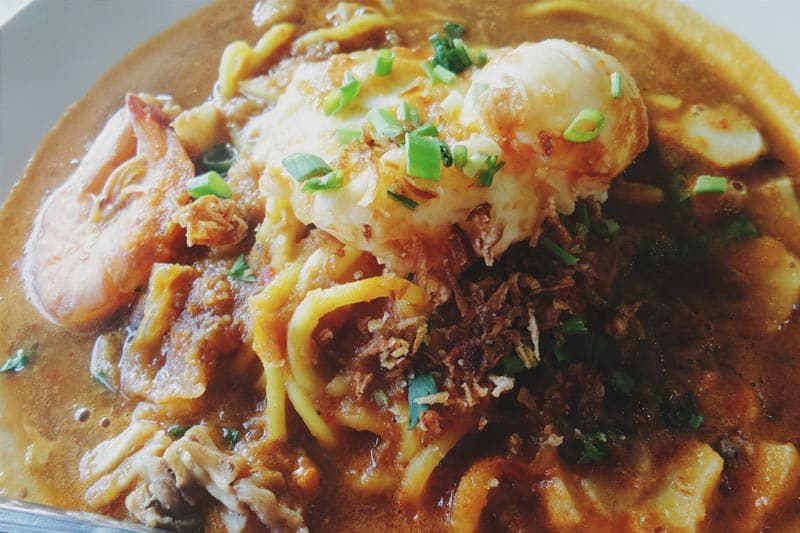
Lovers of rice dishes should head to Beriani Gam Pak Mail (11, Jalan Peteri, Muar town, 84000) and enjoy a serving of the nasi beriani gam. The word ‘gam’ in this dish indicates that the raw meat is cooked with the rice, and then assembled before being finished with steam for a few minutes.
When it comes to snacking, pick up some otak-otak from Otak-Otak Cheng Boi (87 Jalan Lama, 84000, Muar), which is fish paste or ‘custard’ seasoned with spices wrapped in delicate leaf parcels.
Once your hunger has been satisfied, make your way to Kluang Rail Coffee (20 and 21, Jalan Tasik 1, Pusat Perniagaan Tasik, 86000, Kluang) for a cup of Kluang coffee, a blend that originated from Johor that is served with charcoal bread.
What to Eat in Kelantan/Terengganu
The regions of Kelantan and Terengganu are well-known for smaller, tapas-style dishes. The nasi tumpang is a small rice parcel native to Kelantan, which was traditionally a kind of takeaway food for travellers and farmers to bring to work.
Today, the dish can be found at Kopitiam Kita (4357-A Taman Desa Jaya, Jalan Pengkalan Chepa, 15400, Kota Bharu) – try it along with the other delicacies served there.
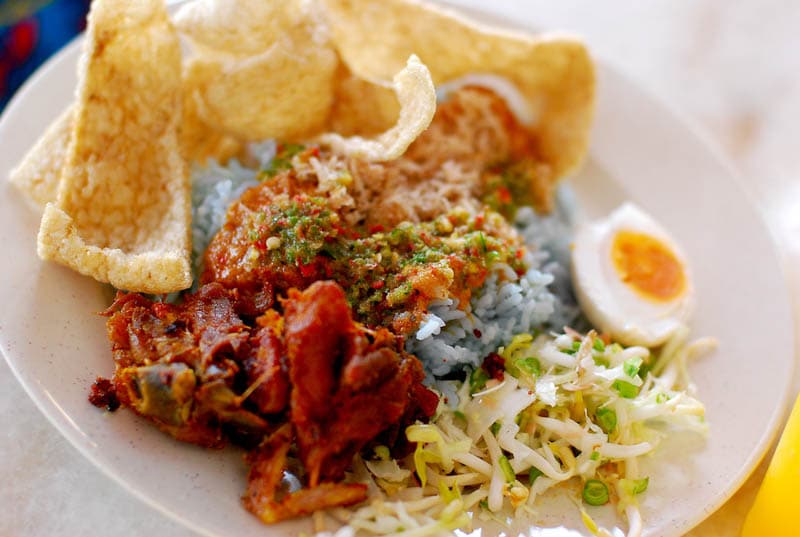
Another must-try snack is keropok lekor, a traditional fish cracker of the Terengganu region. The best version is found at Keropok Lekor B.T.B 2209 (Lot 8292, Kampung Bukit Tok Beng, Seberang Takir, 21300, Kuala Terengganu). Made from fish and sago flour seasoned with salt and sugar, this is something that can be eaten any time of the day.
For a more substantial and rather unique meal, order the nasi kerabu, with its signature blue rice. The colour of the rice is from the petals of the butterfly pea flower. This dish is often eaten with keropok lekor.
Besides trying the traditional Malaysian snacks, visitors with a sweet tooth can also treat themselves to some French toast with kaya at Kopitiam Kita. This odd but popular sweet item is popular for breakfast and afternoon tea.
What to Eat in Penang
Penang is famous for its hawker-style cuisine, notably char koay teow.
One place to find it is Ah Leng Char Koay Teow (Lorong Zoo 6, 11500, Air Itam) – open in the evenings – along with hawker centres dotted around George Town, particularly New Lane Hawker Centre (Lorong Baru, George Town, 10450, Palau Pinang), where the pork porridge is also recommended.
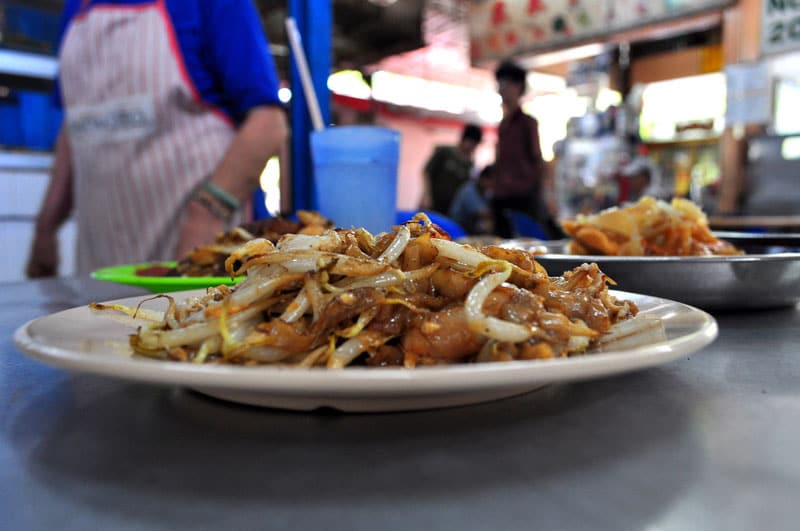
Other than its signature dish, Penang offers a diverse range of dishes for every taste, and there are plenty of establishments that serve them. Popular restaurants in Penang include Merlin Nasi Kandar at the Merlin Hotel (10200 Pulau Pinang) and Pasar Air Itam Laksa (Air Itam Market, Jalan Pasar), which are frequented by locals and visitors alike.
Speaking of Air Itam Market, try the curry laksa at Lim Sisters Curry Mee, as well as the popular oh chien (deep-fried oyster in egg batter) at the nearby Kedai Kopi Bee San (584, Jalan Air Itam).
Food courts can also be a good source of culinary excitement, and so it is with Padang Kota Lama Food Court (Jalan Tun Syed Sheh Barakbah), where you can find Hameed Pata Mee Goreng. Another good restaurant is Duck Koay Chiap, in nearby Lebuh Kimberley. Both serve up delicious local rice and noodle dishes that’ll make you want to forego the diet.
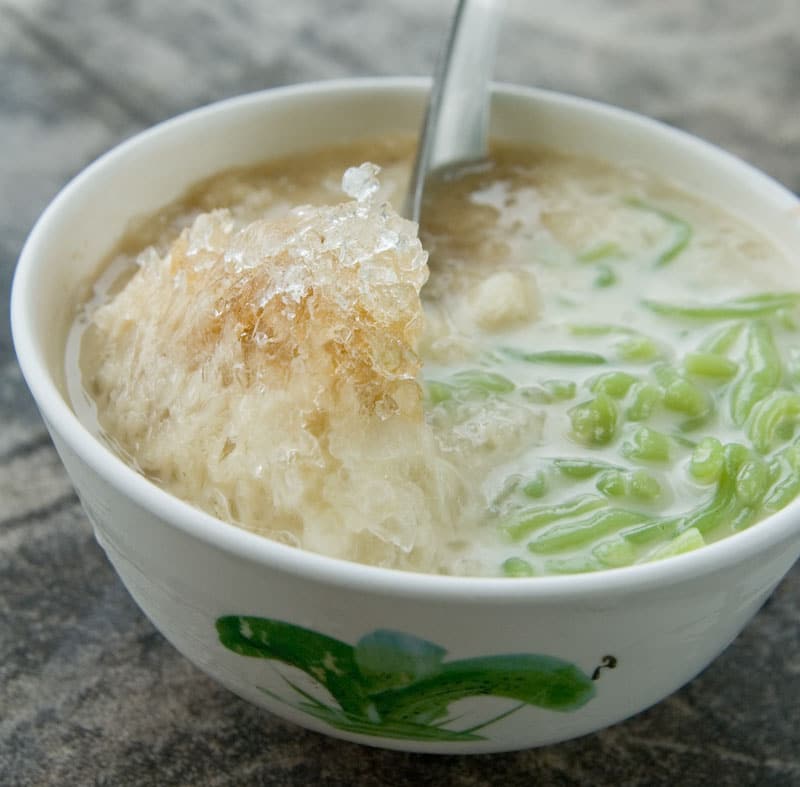
For a sweet end to your day’s meal, slurp up some delicious teochew cendol at Penang Road Famous Teochew Cendol (27 and 29, Lebuh Keng Kwee, 10100, George Town).
What to Eat in Kuala Lumpur
We’ve left the capital until last. You can get any Malaysian specialty in this big melting pot of a city.
The Chinese influence brought dishes such as hokkien mee, a flavoursome fried noodle well-known in the Mun Wah Hokkien Mee restaurant (155, Jalan Maharajalela, 50150, Kuala Lumpur). Chinese-style pork noodle is another favourite among non-halal communities in Kuala Lumpur, especially at the Ooi Noodle House (78, Jalan SS15/4B, 47500, Subang Jaya, Selangor).
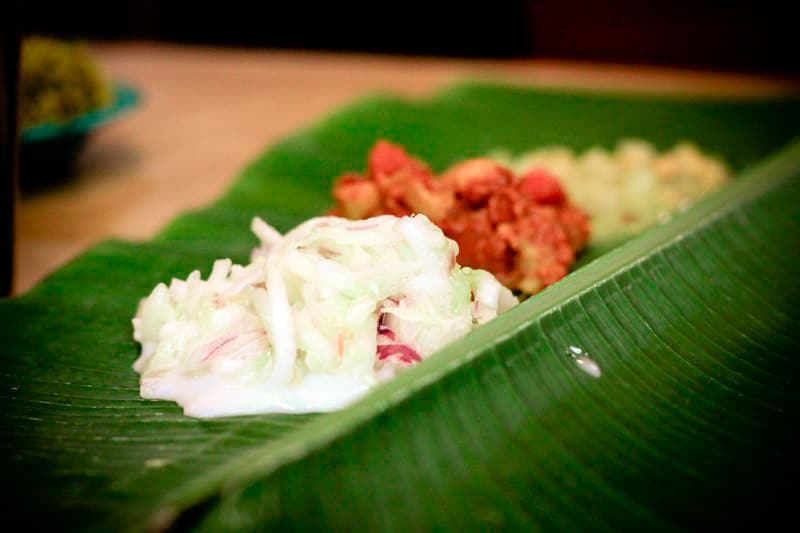
The Indian community in the city has introduced flavours of their own. One of the most popular Malaysian-Indian dishes is banana leaf rice, which can be found around Little India and Brickfields, near Sentral station. A sheet of banana leaf topped with rice and served with an array of curries and meat, it is eaten by hand and is both delicious and fun. Try it at Nirvana Banana Leaf (43, Jalan Telawi 3, Bangsar Baru, 59100 Bangsar, Kuala Lumpur).
Images licensed under the Creative Commons License.
More Articles With Activities
From Turkey to Vietnam, these are the best breakfasts from around the world. (It is the most important meal of the day, after all.)
Thrill seekers take note, these pulse-quickening adventures will inspire conversation fodder for years to come—as well as plenty of amazing photos for your Instagram.